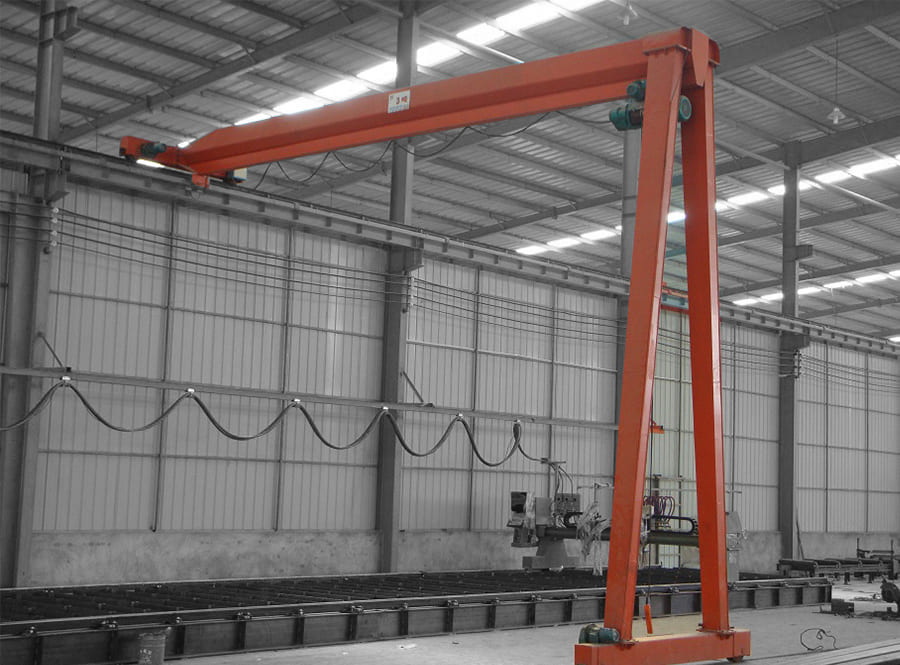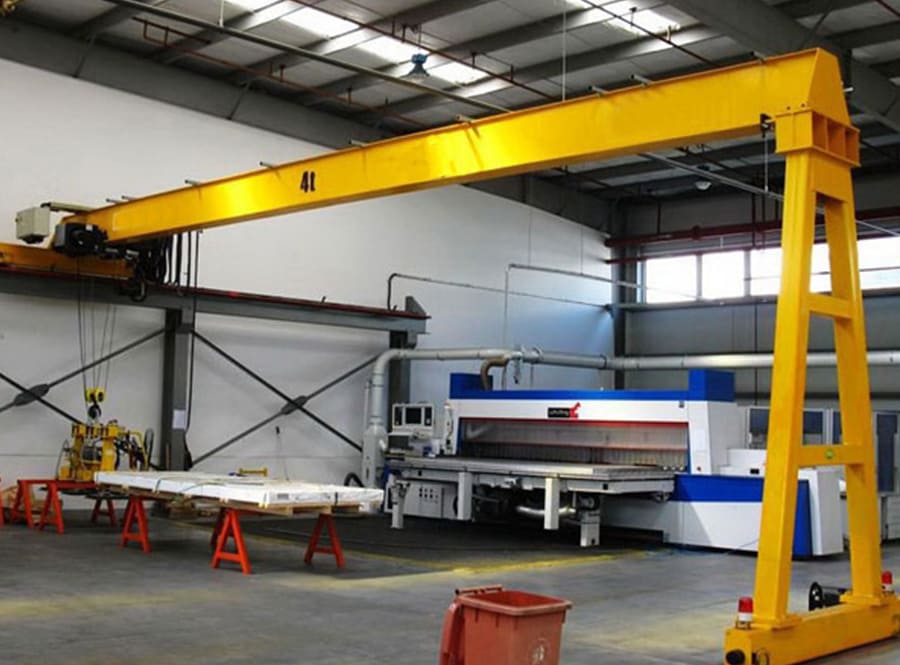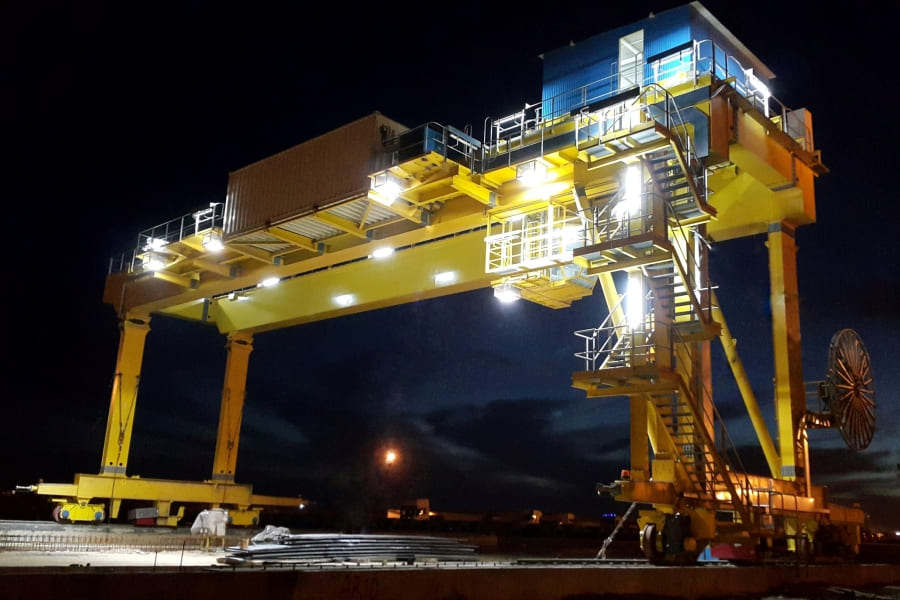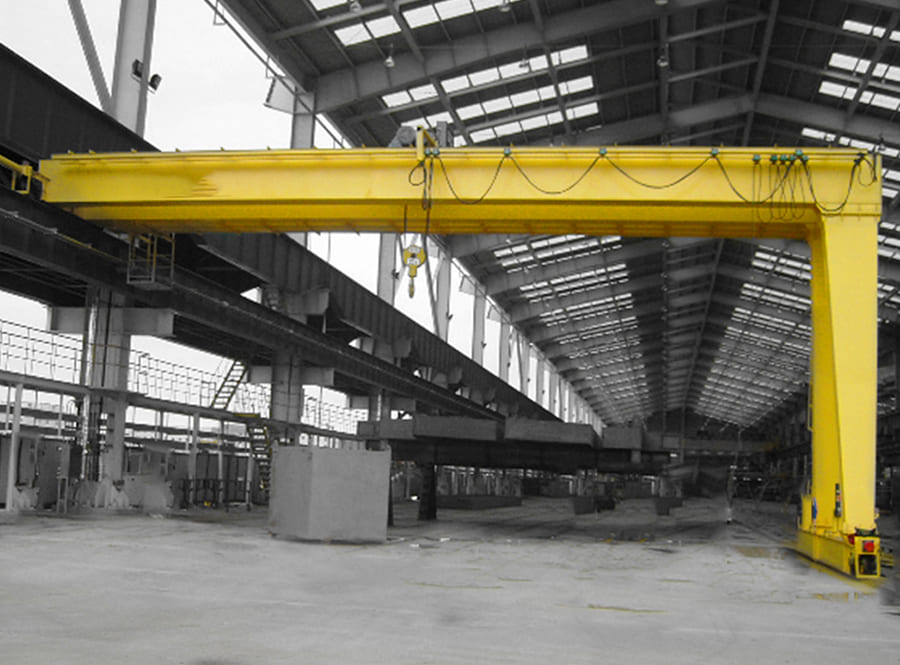Jib cranes, also known as swing cranes, are versatile lifting devices widely used in various industries. With their distinct design and functionality, these cranes offer efficient material handling solutions in both indoor and outdoor environments. In this article, we will explore the features, applications, and benefits of jib cranes, shedding light on their importance in modern industrial operations.

Jib cranes consist of a horizontal jib arm that extends from a vertical mast or a wall-mounted bracket. The jib arm can rotate horizontally, allowing the crane to reach different areas without moving its base. This pivotal feature makes jib cranes ideal for applications where precise lifting and maneuverability are required. The jib arm is typically equipped with a lifting device, such as a hoist or a hook, which enables the crane to lift and transport heavy loads with ease.
Jib cranes find applications across a wide range of industries, including manufacturing, warehouses, construction sites, and shipyards. Their versatility and compact design make them suitable for use in confined spaces or areas with limited access. Common applications of jib cranes include:
Material handling: Jib cranes excel in lifting and moving materials within a defined workspace. They are often used to load and unload trucks, move heavy components on assembly lines, or transport goods in warehouses.
Machine loading: Jib cranes are valuable for loading machines or equipment that require precise positioning. Their ability to rotate and extend the jib arm allows operators to reach machines in tight spaces and safely load or unload materials.
Workstation support: Jib cranes are frequently installed at individual workstations to assist workers in lifting and positioning heavy objects. These cranes improve ergonomics by reducing the physical strain on workers and enhancing productivity.
Maintenance and repair: Jib cranes play a crucial role in maintenance and repair operations. They facilitate the lifting and maneuvering of heavy machinery or equipment during maintenance tasks, ensuring efficient servicing and minimizing downtime.
The utilization of jib cranes offers several advantages to businesses:
Increased efficiency: Jib cranes significantly improve workflow efficiency by providing quick and precise material handling capabilities. They minimize the time and effort required for manual lifting and movement, allowing workers to focus on other essential tasks.
Enhanced safety: Jib cranes contribute to a safer working environment by reducing the risk of injuries associated with manual lifting. By automating the lifting process, they minimize the chances of accidents caused by human error or fatigue.
Space optimization: Kranovi kranovi are designed to occupy minimal floor space while maximizing lifting capacity. Their compact structure makes them suitable for operations in small or crowded areas where larger cranes may not be viable.

Versatility: Jib cranes adapt to a wide range of lifting requirements. They can be customized with various jib lengths, load capacities, and rotation angles to meet specific operational needs. This versatility makes them a valuable asset for businesses with diverse lifting demands.
Cost-effective: Jib cranes offer an economical lifting solution compared to larger overhead cranes. They require less infrastructure, installation time, and maintenance costs, making them a cost-effective choice for businesses seeking efficient lifting capabilities without significant investments.
Jib cranes, also referred to as swing cranes, are essential tools for efficient material handling in numerous industries. Their unique design, rotational capability, and versatility make them indispensable in lifting heavy loads and optimizing workflow. By incorporating jib cranes into their operations, businesses can enhance productivity, improve safety, and achieve greater operational efficiency.





















